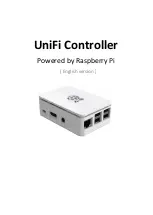
4/20 07.01.2008 CE1G3332xx Siemens Building Technologies
−
Test mode: (DIP switch no. 5 =
)
−
Outside temperature compensation, when using an
outside sensor (DIP switch no. 6)
−
P-band Y1 (potentiometer 5)
−
Setpoint increase or decrease (slider 3)
4. Replace flexible plastic cover.
5. Switch power on. LED for the operating state must
flash (test mode).
6. First, set temperature setting slider to the minimum
value, then to the maximum value: Actuating device(s)
must travel to the minimum or maximum position.
►
If response is wrong, refer to “Troubleshooting”
7. Switch power off.
8. Switch controller to normal operation (DIP switch no. 5
to
).
9. Switch power on. LED for the operating state must
light up (normal operation).
10. If used, activate the auxiliary functions (setpoint
changeover, load-dependent switching contact, etc.).
11. If a remote setting unit is used, set the controller’s
slider for the supply or extract air temperature setpoint
as follows:
−
To
EXT
, if setpoint shall be adjusted with the remote
setting unit
−
To the required setpoint, if the remote setting unit
shall only be used for
setpoint readjustments
12. First, set temperature setting slider to the minimum
value, then to the maximum value: Observe the con-
trol. The response may neither be too fast nor too
slow
►
If response is wrong, refer to “Troubleshooting”
13. Adjust the setpoint with the temperature setting slider.
14. Replace housing cover.
When used as a supply air temperature limiter
1. Switch on the room or extract air temperature control.
2. Remove housing cover.
3. Lift flexible plastic cover so that you can access the
setting elements.
4. Make the settings:
−
Operating action: Single-stage heating
Switch no. 1 =
, switch no. 2 =
−
Control mode: P (switch no. 3 =
, switch no. 4 =
)
−
Test mode: Switch no. 5 =
−
P-band Y1 on approx. 25 K
5. Replace housing cover.
6. Switch power on. LED for the operating state must
flash (test mode).
7. Set temperature setting slider on the limiter to the
maximum value:
Controller must demand a temperature increase
(heating valve must open or cooling valve must close)
►
If response is wrong, refer to “Troubleshooting”
8. Switch power off.
9. Remove housing cover.
10. Switch limiter to normal operation (set switch no. 5 to
).
11. Replace housing cover.
12. Adjust limit value with the temperature setting slider.
Troubleshooting
Wrong response
Possible causes
Valve does not re-
spond
•
Valve not connected
•
No power supply
Valve travels in the
wrong direction
Selection of operating action is
wrong
Valve remains in one of
the end positions
Temperature setting slider is
set to EXT and there is no
remote setting unit connected
Control responds too
slowly
•
Reduce P-band
•
With PI mode, also reduce
the integral action time
Control is instable
•
Increase P-band
•
With PI-mode, also increase
the integral action time
fr
Français
Montage
Lieu de montage
•
Comme régulateur de température de reprise :
immédiatement après l'évacuation d'air de la pièce ou
dans la gaine collective dans le cas de plusieurs sorties
d'air. Toujours avant le ventilateur de reprise
•
Comme régulateur de température de soufflage :
−
après le ventilateur de soufflage, si celui-ci est placé
après le dernier élément de traitement d'air, sinon
−
après le dernier élément de traitement d'air à une dis-
tance de 0,5 m
•
Comme limiteur minimal de la température de soufflage :
le plus près possible de l'arrivée d'air dans le local
•
Comme régulateur de point de rosée :
immédiatement après le séparateur de gouttelettes du la-
veur d'air
Montage
Procédure :
1. Monter d'abord la bride ; respecter les cotes d'encom-
brement pour le perçage
2. Cambrer la sonde à tige flexible manuellement (ne ja-
mais utiliser un outil) de sorte à ce qu'elle traverse la
gaine en diagonale une fois montée.
Attention La sonde à tige flexible ne doit pas toucher la
paroi de la gaine : distance minimale 50 mm ; rayon de
cambrage minimal admissible = 10 mm
33
3
2Z03
3. Monter la bride de fixation
4. Glisser et encliqueter le régulateur sur la bride de
fixation





































